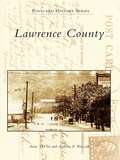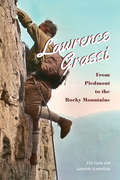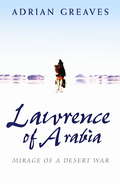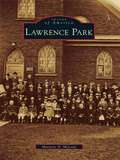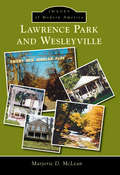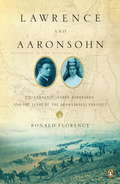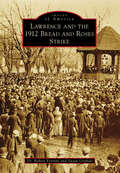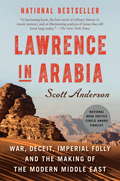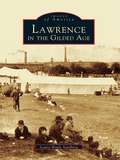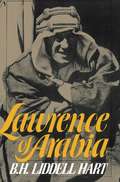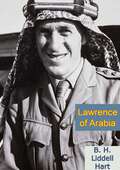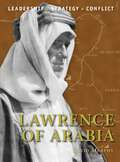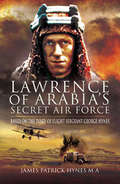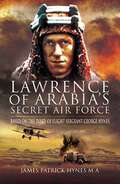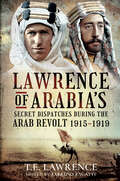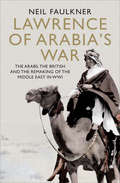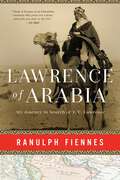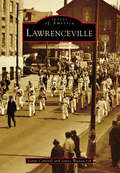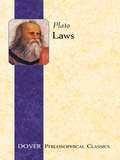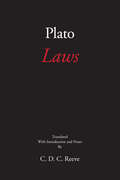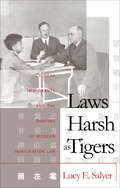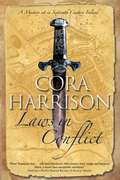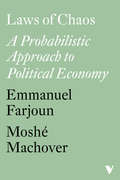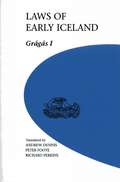- Table View
- List View
Lawrence County
by Anita Devivo Anthony P. WalczakLawrence County was named for naval captain James Lawrence, who gave the famous command "Don't give up the ship" during the War of 1812. His command became a slogan for western Pennsylvanians in the early 1800s when what was to become Lawrence County was divided between Mercer County and Beaver County. In 1820, residents started to protest the inconvenience of conducting business in two jurisdictions and proposed a new county to unify the community. They did not give up the ship. Finally in 1849, Lawrence County was authorized. The new county was rich with rolling hills, rivers, forests, and fertile land. Limestone, iron ore, coal, and clay supported burgeoning industries. Lawrence County illustrates the effect of these industries on the area through more than 200 vintage postcards and photographs. Also illustrated are the Old Order Amish and places such as Possum Hollow, Breakneck Bridge, SNPJ, and Energy.
Lawrence Grassi
by Gabriele Scardellato Elio CostaLawrence Grassi was a trailblazer in every sense of the word. A working-class man of humble Italian origins who worked as a labourer and a coal miner for most of his life, Grassi had a deep passion for the Rocky Mountains. He was famous in the region for his commitment as a guide, a mountain climber, and a builder of greatly admired hiking trails. Today, in or near Canmore, his name graces a mountain, two lakes, and a school, and he is commemorated at Lake O'Hara in Yoho National Park.In Lawrence Grassi: From Piedmont to the Rocky Mountains, Elio Costa and Gabriele Scardellato uncover the deeply private man behind this legend, from his birth in the small Italian village of Falmenta to his long and inspirational career in Canada. Using previously unexamined family letters and extensive information on Grassi's cohort of Italian immigrants, the authors reconstruct his personal and professional life, correcting myths and connecting his story to the long history of Italian immigration to Canada. The definitive biography of this Canadian mountain hero, Lawrence Grassi will be essential reading for those interested in the history of immigration, sport, and the Rocky Mountains.
Lawrence Of Arabia: Mirage Of A Desert War
by Adrian GreavesA new biography of Lawrence of ArabiaT.E. Lawrence is one of the most enigmatic characters in British history. At the outbreak of the First World War he was working as an archaeologist in the Middle East. He had no military training at all, and a strong distrust of politicians and senior officers alike. And yet he succeeded in a task where all these people had failed: not only did he unite the Arab nation - a nation at perpetual war with itself - but he also led them to victory against the Ottoman Empire.How he managed to achieve these incredible feats has fascinated and confounded historians ever since. The myths that have grown up around this remarkable man have been enhanced by the untruths Lawrence himself propagated. He was never captured and tortured by the Turks as he claimed, neither was he the first to target Ottoman troops by dynamiting their trains. And yet the truth is every bit as compelling as the fiction. He was far more ruthless than he portrayed himself, and the battles he fought were every bit as barbarous as those fought by his Ottoman enemies. He was also strangely determined not to take credit for his achievements: when offered the VC at Buckingham Palace he refused it, leaving the king holding the box.This brand new biography by the author of RORKE'S DRIFT uses primary sources to uncover the truth from all the fictions that surround this legendary man. It covers the actualities of the war Lawrence fought in greater detail than ever before, and also describes what happened to Lawrence after the war.
Lawrence Of Arabia: Mirage Of A Desert War
by Adrian GreavesA new biography of Lawrence of ArabiaT.E. Lawrence is one of the most enigmatic characters in British history. At the outbreak of the First World War he was working as an archaeologist in the Middle East. He had no military training at all, and a strong distrust of politicians and senior officers alike. And yet he succeeded in a task where all these people had failed: not only did he unite the Arab nation - a nation at perpetual war with itself - but he also led them to victory against the Ottoman Empire.How he managed to achieve these incredible feats has fascinated and confounded historians ever since. The myths that have grown up around this remarkable man have been enhanced by the untruths Lawrence himself propagated. He was never captured and tortured by the Turks as he claimed, neither was he the first to target Ottoman troops by dynamiting their trains. And yet the truth is every bit as compelling as the fiction. He was far more ruthless than he portrayed himself, and the battles he fought were every bit as barbarous as those fought by his Ottoman enemies. He was also strangely determined not to take credit for his achievements: when offered the VC at Buckingham Palace he refused it, leaving the king holding the box.This brand new biography by the author of RORKE'S DRIFT uses primary sources to uncover the truth from all the fictions that surround this legendary man. It covers the actualities of the war Lawrence fought in greater detail than ever before, and also describes what happened to Lawrence after the war.
Lawrence Park
by Marjorie D. McleanLawrence Park was planned, developed, and built by the General Electric Company in 1910, when the company decided to build their plant near Erie, Pennsylvania. However, Lawrence Park was not to be a company town, but rather a planned community in the "English garden" concept. The tree-lined streets, flowering boulevards, and delightful parks are a testimony to those visionaries. Around 1900, the elegant Grove House Hotel was built on the banks of beautiful Lake Erie, and later a lively amusement park flourished there. The Stone House, built in 1832 and rumored to be a station in the Underground Railroad, still stands at the crossroads. The early settlers of Lawrence Park laid the foundation for a caring community that today enthusiastically embraces school and community activities.
Lawrence Park and Wesleyville
by Marjorie D. McleanLawrence Park Township and Wesleyville Borough are suburbs of Erie, Pennsylvania, and both communities are proud of their comfortable residences, many churches, parks, and business districts. Wesleyville grew along Buffalo Road, while Lawrence Park was developed by the General Electric Company a century later. Four Mile Creek, with its picturesque wanderings, is shared by both communities, and local legend suggests that it might have played a part in the Underground Railroad and the activities of rumrunners. In the early 1960s, the rival schools of the two communities merged to form the Iroquois School District. Amazingly, in 1965-1966, the first year of the merged district, the football team won the Erie County league championship. Many more accolades have come to Iroquois students for athletics, music, art, and intellectual achievements, and it is certain that they will continue, so "Roll on Big I."
Lawrence and Aaronsohn: T. E. Lawrence, Aaron Aaronsohn, and the Seeds of the Arab-Israeli Conflict
by Ronald FlorenceThe rivalry that presaged the world?s most tenacious conflict As the Arab -Israeli conflict continues to plague the Middle East, historian Ronald Florence offers extraordinary new insights on its origins. This is the story of T. E. Lawrence, the young British officer who became famous around the world as Lawrence of Arabia, Aaron Aaronsohn, an agronomist from Palestine, and the antagonism that divided them over the fate of the dying Ottoman Empire during World War I?a clash of visions that set Arab nationalism and Zionism on a direct collision course that reverberates to this day.
Lawrence and the 1912 Bread and Roses Strike
by Susan Grabski Robert ForrantIncorporated in 1847 on the banks of the Merrimack River, Lawrence, Massachusetts, was the final and most ambitious of New England's planned textile-manufacturing cities developed by the Boston-area entrepreneurs who helped launch the American Industrial Revolution. With a dam and canal system to generate power, by 1912 Lawrence led the world in the production of worsted wool cloth. The Pacific Cotton Mills alone had sales of nearly $10 million and had mechanical equipment capable of producing 800 miles of finished textile fabrics every working day. However, industrial growth was accompanied by worsening health, housing, and working conditions for most of the city's workers. These were the root causes that led to the long, sometimes violent struggle between people of diverse ethnic groups and languages and the city's mill owners and overseers. The 1912 strike--known today as the Bread and Roses Strike--became a landmark moment in history.
Lawrence in Arabia: War, Deceit, Imperial Folly and the Making of the Modern Middle East
by Scott AndersonNATIONAL BESTSELLER • A New York Times Notable Book • Finalist for the National Book Critics Circle Award in Biography • A thrilling and revelatory narrative of one of the most epic and consequential periods in 20th century history – the Arab Revolt and the secret &“great game&” to control the Middle East&“A fascinating book, the best work of military history in recent memory and an illuminating analysis of issues that still loom large today."—The New York Times"Brilliant. . . . A dazzling accomplishment that combines superb historical research with a compelling narrative.&”—The Seattle TimesThe Arab Revolt against the Turks in World War I was, in the words of T. E. Lawrence, &“a sideshow of a sideshow.&” As a result, the conflict was shaped to a remarkable degree by a small handful of adventurers and low-level officers far removed from the corridors of power.At the center of it all was Lawrence himself. In early 1914 he was an archaeologist excavating ruins in Syria; by 1917 he was riding into legend at the head of an Arab army as he fought a rearguard action against his own government and its imperial ambitions. Based on four years of intensive primary document research, Lawrence in Arabia definitively overturns received wisdom on how the modern Middle East was formed.One of the Best Books of the Year: NPR, The Christian Science Monitor, The Seattle Times , St. Louis Post-Dispatch , Chicago Tribune
Lawrence in the Gilded Age
by Louise Brady SandbergThe Gilded Age, c. 1870-1898, was a time of promise and expanding horizons for the people of Lawrence, known as "the Queen City on the Merrimack." Passenger trains, horse-drawn trolleys, and electric streetcars dominated transportation, one-third of the population worked in manufacturing, and thirteen newspapers brought the latest information to the city's burgeoning population of nearly sixty thousand people. Through unique images from the special collections of the Lawrence Public Library, rich commentary, and a virtual walking tour, Lawrence in the Gilded Age relives the last three decades of the nineteenth century in Lawrence, which had managed to avoid the labor strikes and political and social unrest that plagued the city in the early twentieth century.
Lawrence of Arabia
by B. H. Liddell HartT. E. Shaw, better known as Lawrence of Arabia, was one of the most romantic, heroic, and enigmatic figures of his day. The subject of myth and hagiography, he was equally accomplished in several fields-as archaeologist, diplomat, writer, and soldier-and he worked throughout World War I and after in the Middle East in efforts to promote independent Arab states. His autobiography Seven Pillars of Wisdom is one of the greatest works of its kind. The esteemed military historian B. H. Liddell Hart wrote this study of Lawrence in order to pierce the clouds of legend. He discussed Lawrence's Oxford days, his experiences as an intelligence officer in Egypt, and in particular the tactics of guerrilla warfare he practiced so effectively against the large Turkish armies during World War I. Liddell Hart was one of the few to give Lawrence his full justice as both a man and a brilliant soldier. Long out-of-print, this book unravels the many puzzling features of Lawrence's story and restores him to his proper place as one of the twentieth century's heroic, but very human, figures.
Lawrence of Arabia
by B. H. Liddell HartB. H. Liddell Hart’s Lawrence of Arabia is an authoritative and compelling biography of T.E. Lawrence, the enigmatic and legendary figure who played a pivotal role in the Arab Revolt during World War I. Written by one of the 20th century’s most respected military historians, this book provides a deeply nuanced portrait of Lawrence as both a military strategist and a complex individual shaped by extraordinary circumstances.Drawing on extensive research, personal correspondence, and firsthand accounts, Liddell Hart explores Lawrence’s transformation from an Oxford scholar of Middle Eastern archaeology into a revolutionary leader and guerrilla warfare expert. The book delves into Lawrence’s alliances with Arab leaders, his daring campaigns against the Ottoman Empire, and his role in uniting diverse tribes under a common cause.Liddell Hart also examines Lawrence’s groundbreaking strategies in asymmetrical warfare, offering insights into his military genius and the enduring influence of his tactics. At the same time, the biography captures Lawrence’s internal struggles with fame, his sense of betrayal during the postwar peace negotiations, and his enduring quest for purpose.With its rich detail and balanced perspective, Lawrence of Arabia sheds light on the man behind the legend, presenting a vivid account of his life and legacy in both military and political history. Liddell Hart’s masterful writing ensures this biography is as engaging as it is informative, offering readers a profound understanding of one of the most fascinating figures of the modern era.Perfect for history enthusiasts, military scholars, and fans of epic biographies, Lawrence of Arabia is a timeless exploration of leadership, courage, and the complexities of shaping history.
Lawrence of Arabia
by Giuseppe Rava David MurphyThomas Edward Lawrence, more popularly known as Lawrence of Arabia, was one of the most iconic figures of the 20th century, immortalized on stage and screen, whose exploits in the Middle East in the second half of World War I helped shape the campaign in that part of the world. In the course of two brief years, Lawrence emerged as one of the main strategic and tactical minds behind the Arab Revolt. He went from being an obscure staff officer to the rank of full colonel and became one of the men who shaped the modern Middle East. From being a pure amateur, he also developed desert tactics that would be used throughout World War II and afterwards. This new Command title provides an in-depth analysis of every aspect of Lawrence's storied military career.From the Trade Paperback edition.
Lawrence of Arabia's Secret Air Force: Based on the Diary of Flight Sergeant George Hynes
by James Patrick HynesX Flight was designated the task of giving close air support to the desert army formed and commanded by Lawrence of Arabia. It flew from advanced desert landing grounds on reconnaissance, liaison, bombing and ground attack missions. The existence and deeds of the flight were kept secret, so much so that even the RFC Paymaster was unaware of their existence.George Hynes was an aircraft mechanic and became responsible for keeping the flights somewhat elderly aircraft airworthy whilst working in the most difficult desert conditions on hastily constructed landing strips and living and working under canvas in temperatures that froze at night and rose to 100 degrees plus at noon.His diary gives a clear insight into the conditions endured, the actions that took place and the many almost insurmountable problems that occurred as they followed Lawrences steady advance against the numerically superior Turkish Army and Air Force. George personally encountered Lawrence on many occasions and maintained contact with him after the war.The diary is supported with the Flights weekly operational records, perspectives of the battle scenarios and other background information.
Lawrence of Arabia's Secret Air Force: Based on the Diary of Flight Sergeant George Hynes
by James Patrick HynesX Flight was designated the task of giving close air support to the desert army formed and commanded by Lawrence of Arabia. It flew from advanced desert landing grounds on reconnaissance, liaison, bombing and ground attack missions. The existence and deeds of the flight were kept secret, so much so that even the RFC Paymaster was unaware of their existence.George Hynes was an aircraft mechanic and became responsible for keeping the flights somewhat elderly aircraft airworthy whilst working in the most difficult desert conditions on hastily constructed landing strips and living and working under canvas in temperatures that froze at night and rose to 100 degrees plus at noon.His diary gives a clear insight into the conditions endured, the actions that took place and the many almost insurmountable problems that occurred as they followed Lawrences steady advance against the numerically superior Turkish Army and Air Force. George personally encountered Lawrence on many occasions and maintained contact with him after the war.The diary is supported with the Flights weekly operational records, perspectives of the battle scenarios and other background information.
Lawrence of Arabia's Secret Dispatches During the Arab Revolt, 1915–1919
by T.E. LawrenceT. E. Lawrence’s dispatches during the Arab Revolt have been published before, but only in an edited and incomplete form, as they were printed for a strictly limited wartime readership in the Arab Bulletin. Now, in this scholarly edition, they are published in full for the first time. They give us a direct inside view of his dealings with the Arab leaders and show us how he presented them to his superiors in Cairo. These wartime writings reveal vividly his impressions of the periods he spent in the desert and the conditions he found there, and they record how the Arab uprising developed and how he became increasingly involved in it. They make fascinating reading for, in his sometimes outspoken way, he reported on the military potential of the Arab fighters and recommended how they should be supported in their struggle against the Ottoman empire. This new collection of his dispatches is a valuable addition to the literature on Lawrence for it allows readers to trace the course of the revolt as he wrote about it at the time. They are printed in chronological order with full explanatory notes. The editor Fabrizio Bagatti provides a perceptive introduction which sets them in their wartime context, fills in the military and political background to the strategic situation in the Middle East and describes Lawrence’s important role as an intermediary between the Arabs and the British.
Lawrence of Arabia's War: The Arabs, the British and the Remaking of the Middle East in WWI
by Neil FaulknerThis radically new perspective on T. E. Lawrence, the Arab Revolt, and WWI in the Middle East provides essential insight into today&’s violent conflicts. Archaeologist and historian Neil Faulkner draws on ten years of field research in the Middle East to offer the first truly multidisciplinary history of the conflicts that raged in Sinai, Arabia, Palestine, and Syria during the First World War. Rarely is a book published that revises our understanding of an entire world region and the history that has defined it. This groundbreaking volume makes just such a contribution. In Lawrence of Arabia&’s War, Faulkner sheds new light on British intelligence officer T. E. Lawrence and his legendary military campaigns. He explores the intersections among the declining Ottoman Empire, the Bedouin tribes, rising Arab nationalism, and Western imperial ambition. Faulkner arrives at a provocative new analysis of Ottoman resilience in the face of modern industrialized warfare. This analysis leads him to reassesses the relative weight of conventional operations in Palestine and irregular warfare in Syria—and thus the historic roots of today&’s divided, fractious, war-torn Middle East.
Lawrence of Arabia: My Journey in Search of T. E. Lawrence
by Ranulph FiennesA vivid and illuminating biography of the famed T. E. Lawrence, written by &“the world's greatest living explorer,&” Ranulph Fiennes.As a young British intelligence officer in Cairo, archaeologist and adventurer Thomas Edward Lawrence became involved in the 1916 Arab Revolt, fighting alongside rebel forces against the Ottomans. He made a legendary 300-mile journey through blistering heat; he wore Arab dress; and he strongly identified with the people in his adopted lands. By 1918, he had a £20,000 price on his head. Despite readers' long fascination in his story, Lawrence—one of history's most enigmatic adventurers—has long remained unknowable, But with in-depth knowledge of what it takes to venture into the unknown, this authoritative biography from famed explorer Ranulph Fiennes at last brings enthralling insight and clarity to this remarkable life.
Lawrenceville
by James Wudarczyk Joann CantrellFrom its founding in 1814 by William Barclay Foster, Lawrenceville has been the center of historic events. During the Civil War, the riverside community became home to the Allegheny Arsenal, where 78 people perished in an explosion in 1862, making it the worst civilian disaster of the war. Lawrenceville evolved into a lively, walkable neighborhood that barely slept because of the high volume of shift workers at places such as Iron City Brewery, St. Francis Hospital, and the steel mills. Businesses, churches, all-night diners, and other gathering places were easily accessible to residents, and families became closely associated with the landmarks where they worked, worshipped, and socialized. Having celebrated its 200th birthday in 2014, Lawrenceville remains a bustling community with a vitality equal to that of the immigrant days, and it continues to be a place of camaraderie where individuals are dedicated to their neighborhood.
Laws
by Plato Benjamin JowettA lively dialogue between a foreign philosopher and a powerful statesman, Plato's Laws reflects the essence of the philosopher's reasoning on political theory and practice. It also embodies his mature and more practical ideas about a utopian republic. Plato's discourse ranges from everyday issues of criminal and matrimonial law to wider considerations involving the existence of the gods, the nature of the soul, and the problem of evil. This translation of Plato's Laws by the distinguished scholar Benjamin Jowett is an authoritative choice for students of philosophy, political science, and literature. It is included among Dover Publications' Philosophical Classics, a series that comprises the major works of ancient and modern world philosophy. Low-priced, high-quality, and unabridged, these editions are ideal for teachers and students as well as for general readers.
Laws (Hackett Classics)
by Plato"This is a superb new translation that is remarkably accurate to Plato's very difficult Greek, yet clear and highly readable. The notes are more helpful than those in any other available translation of the Laws since they contain both the information needed by the beginning student as well as analytical notes that include references to the secondary literature for the more advanced reader. For either the beginner or the scholar, this should be the preferred translation."—Christopher Bobonich, Clarence Irving Lewis Professor of Philosophy, Stanford University
Laws Harsh As Tigers
by Lucy E. SalyerFocusing primarily on the exclusion of the Chinese, Lucy Salyer analyzes the popular and legal debates surrounding immigration law and its enforcement during the height of nativist sentiment in the early twentieth century. She argues that the struggles between Chinese immigrants, U.S. government officials, and the lower federal courts that took place around the turn of the century established fundamental principles that continue to dominate immigration law today and make it unique among branches of American law. By establishing the centrality of the Chinese to immigration policy, Salyer also integrates the history of Asian immigrants on the West Coast with that of European immigrants in the East.Salyer demonstrates that Chinese immigrants and Chinese Americans mounted sophisticated and often-successful legal challenges to the enforcement of exclusionary immigration policies. Ironically, their persistent litigation contributed to the development of legal doctrines that gave the Bureau of Immigration increasing power to counteract resistance. Indeed, by 1924, immigration law had begun to diverge from constitutional norms, and the Bureau of Immigration had emerged as an exceptionally powerful organization, free from many of the constraints imposed upon other government agencies.
Laws in Conflict: A Mystery of Medieval Ireland (Burren Mysteries #8)
by Cora Harrison"Harrison, like Peter Tremayne in his Sister Fidelma series, provides a superior brand of historical mystery" Booklist. February, 1512. Mara, Brehon of the Burren, judge and lawgiver, has been invited to the magnificent city state of Galway, which is ruled by English laws and a royal charter originally granted by Richard III. Mara wonders whether she can use her legal knowledge to save the life of a man from the Burren who has been caught stealing a meat pie, but events soon take an even more dramatic turn when the mayor's son is charged with a heinous crime. Sure there is more to the case than meets the eye, Mara investigates ...
Laws of Chaos: A Probabilistic Approach To Political Economy
by Moshé Machover Emmanuel FarjounClassic work of political economicsA defining work of Econophysics, and republished for the first time since 1983, Laws of Chaos is an attempt to construct a non-deterministic theoretical framework for the foundations of political economy. It relies on probabilistic and statistical methods of the kind used in the modern foundations of several other sciences, introducing scientific modelling into economics for the first time.
Laws of Early Iceland: Gragas I
by Andrew Dennis Peter Foote Richard PerkinsThe laws of Medieval Iceland provide detailed and fascinating insight into the society that produced the Icelandic sagas. Known collectively as Gragas (Greygoose), this great legal code offers a wealth of information about early European legal systems and the society of the Middles Ages. This first translation of Gragas is in two volumes.
